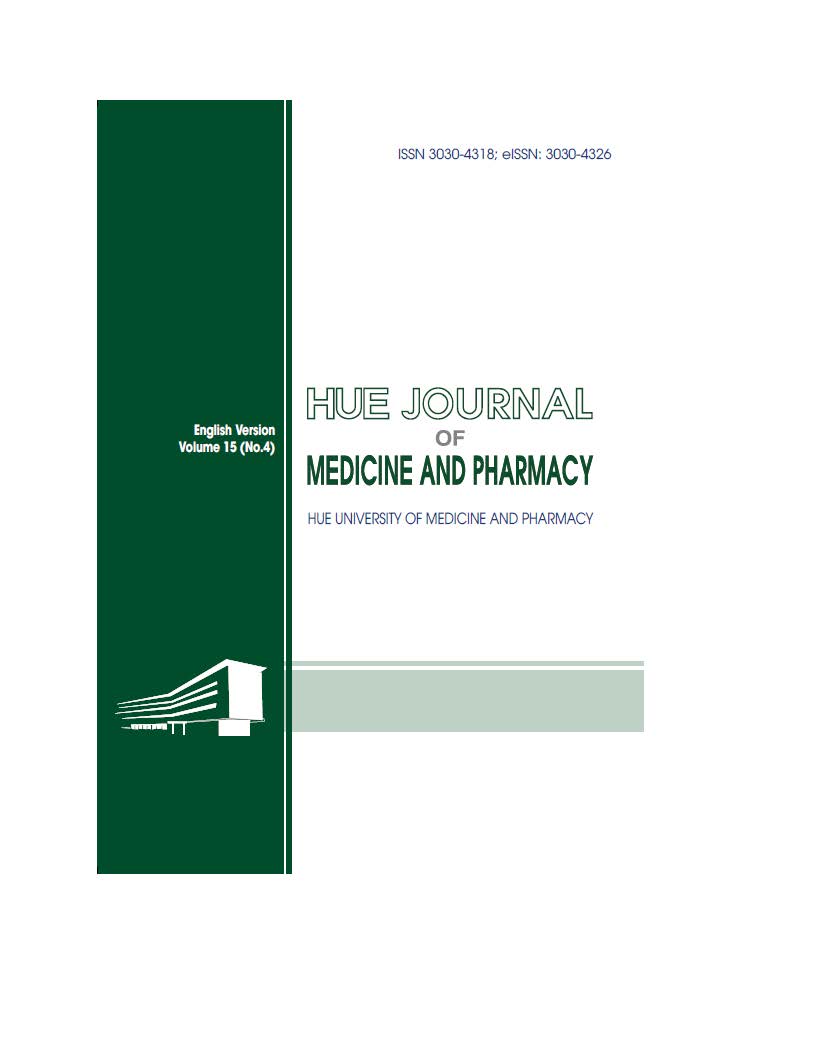Abstract
Objectives: In patients who underwent Percutaneous coronary intervention (PCI), contrast-induced acute kidney injury (CI-AKI), which is defined as a blood creatinine increase by > 0.5 mg/dl (44.2 mmol/l) or > 25% of the initial creatinine value within 48 hours after intervention, is one of the severe complications of the procedure. We conducted this study to assess the Mehran risk score in patients who underwent PCI; the prognostic value of the Mehran risk score in the risk of CI-AKI; and to follow up the kidney function after three months and six months.
Materials and methods: We analyzed 217 patients who underwent PCI from 01/2020 to 03/2021 at Hue University of Medicine and Pharmacy Hospital. We calculated the Mehran risk score, investigated the characteristics related to CI-AKI, and followed up on kidney function after three and six months.
Results: Patients with CI-AKI had an average Mehran risk score of 10.92 ± 6.05, significantly higher than patients without CI-AKI with 3.87 ± 3.71. In the multivariate regression analysis, Hypotension, Age > 75, and Diabetes were independently associated with CI-AKI. The cut-off value for risk of CI-AKI of Mehran risk score was > 10, with a sensitivity of 66.7% and a specificity of 88.3%. The kidney function improved significantly in patients with CI-AKI after three months of follow-up. There were three patients with EFGR < 60 ml/min/1.73 m2, and these results were maintained for six months of follow-up.
Conclusions: Mehran risk score had prognostic value in assessing CI-AKI in patients who underwent PCI. Hypotension, age > 75, and diabetes are independent risk factors for CI-AKI.
| Published | 2025-08-30 | |
| Fulltext |
|
|
| Language |
|
|
| Issue | Vol. 15 No. 4 (2025) | |
| Section | Original Articles | |
| DOI | 10.34071/jmp.2025.4.13 | |
| Keywords | Coronary artery disease, Mehran risk score, Percutaneous coronary intervention, CI-AKI, Prognosis |

This work is licensed under a Creative Commons Attribution-NonCommercial-NoDerivatives 4.0 International License.
Copyright (c) 2025 Hue Journal of Medicine and Pharmacy
Gaziano TA, Prabhakaran D, Gaziano JM. Global Burden of cardiovascular disease. Braunwald’s Heart Disease - A textbook of cardiovascular medicine. 11 ed, 2019. p. 01-17.
Go AS, Mozaffarian D, Roger VL, Benjamin EJ, Berry JD, Borden WB, et al. Heart disease and stroke statistics--2013 update: a report from the American Heart Association. Circulation. 2013;127(1):e6-e245.
Almendarez M, Gurm HS, Mariani J, Jr., Montorfano M, Brilakis ES, Mehran R, et al. Procedural Strategies to Reduce the Incidence of Contrast-Induced Acute Kidney Injury During Percutaneous Coronary Intervention. JACC Cardiovasc Interv. 2019;12(19):1877-88.
Abellas-Sequeiros RA, Raposeiras-Roubin S, Abu-Assi E, Gonzalez-Salvado V, Iglesias-Alvarez D, Redondo-Dieguez A, et al. Mehran contrast nephropathy risk score: Is it still useful 10 years later? J Cardiol. 2016;67(3):262-7.
Wi J, Ko YG, Shin DH, Kim JS, Kim BK, Choi D, et al. Prediction of Contrast-Induced Nephropathy With Persistent Renal Dysfunction and Adverse Long-term Outcomes in Patients With Acute Myocardial Infarction Using the Mehran Risk Score. Clin Cardiol. 2013;36(1):46-53.
Mehran R, Aymong ED, Nikolsky E, Lasic Z, Iakovou I, Fahy M, et al. A simple risk score for prediction of contrast- induced nephropathy after percutaneous coronary intervention: development and initial validation. J Am Coll Cardiol. 2004;44(7):1393-9.
Rear R, Bell RM, Hausenloy DJ. Contrast-induced nephropathy following angiography and cardiac interventions. Heart. 2016;102(8):638-48.
Gurm HS, Seth M, Kooiman J, Share D. A novel tool for reliable and accurate prediction of renal complications in patients undergoing percutaneous coronary intervention. J Am Coll Cardiol. 2013;61(22):2242-8.
Liu Y, Tan N, Zhou YL, He PC, Luo JF, Chen JY. The contrast medium volume to estimated glomerular filtration rate ratio as a predictor of contrast-induced nephropathy after primary percutaneous coronary intervention. Int Urol Nephrol. 2012;44(1):221-9.
Ni Z, Liang Y, Xie N, Liu J, Sun G, Chen S, et al. Simple pre-procedure risk stratification tool for contrast-induced nephropathy. J Thorac Dis. 2019;11(4):1597-610.
Sato A, Hoshi T, Kakefuda Y, Harunari T, Watabe H, Hiraya D, et al. Effect of the Mehran risk score for the prediction of clinical outcomes after percutaneous coronary intervention. J Cardiol. 2015;66(5):417-22.
Bùi Xuân Nghĩa, Hoàng Bùi Bảo, Hồ Anh Bình. Nghiên cứu mối liên quan giữa các yếu tố nguy cơ tim mạch và điểm Mehran với tổn thương thận cấp do thuốc cản quang. Tạp chí Y học Lâm sàng- Bệnh viện Trung Ương Huế, 2021(71):01-11. DOI: 10.38103/jcmhch.2021.71.1.
Kusirisin P, Chattipakorn SC, Chattipakorn N. Contrast-induced nephropathy and oxidative stress: mechanistic insights for better interventional approaches. J Transl Med. 2020;18(1):400.
Abe D, Sato A, Hoshi T, Kakefuda Y, Watabe H, Ojima E, et al. Clinical predictors of contrast-induced acute kidney injury in patients undergoing emergency versus elective percutaneous coronary intervention. Circ J. 2014;78(1):85-91.
Cho E, Ko GJ. The Pathophysiology and the Management of Radiocontrast-Induced Nephropathy. Diagnostics (Basel). 2022;12(180).






